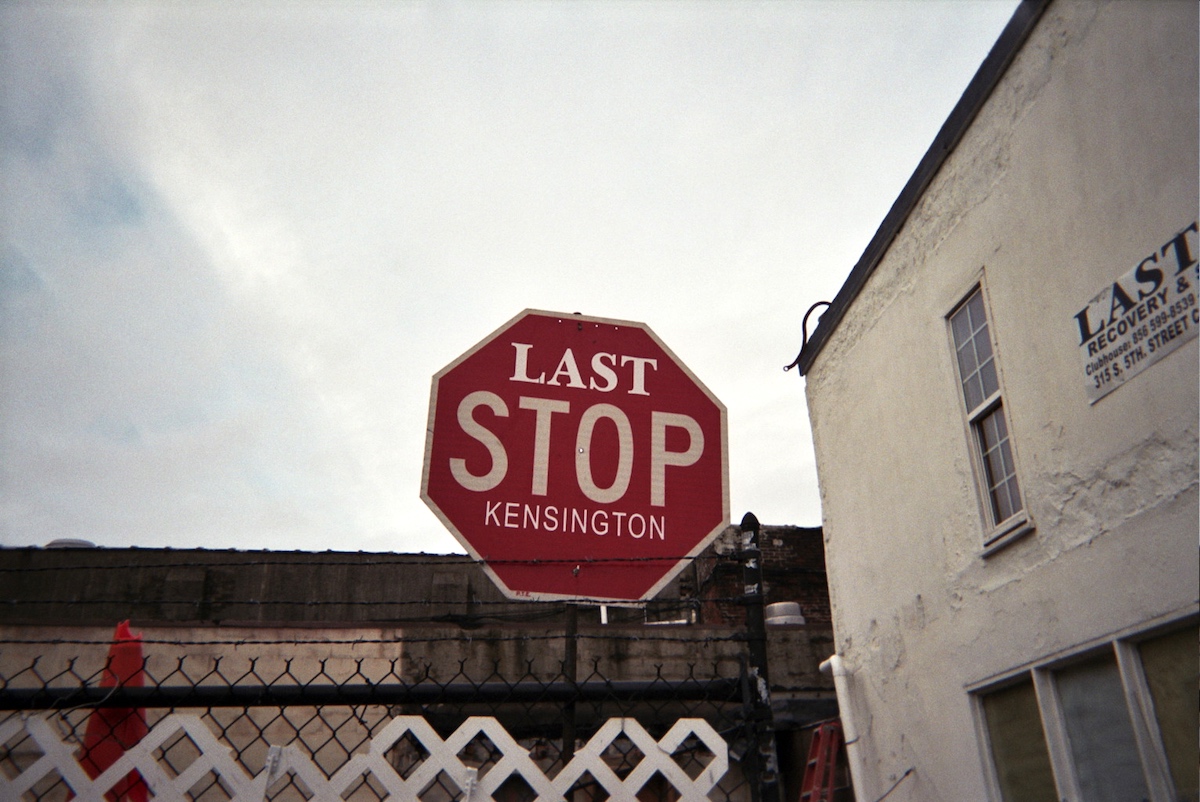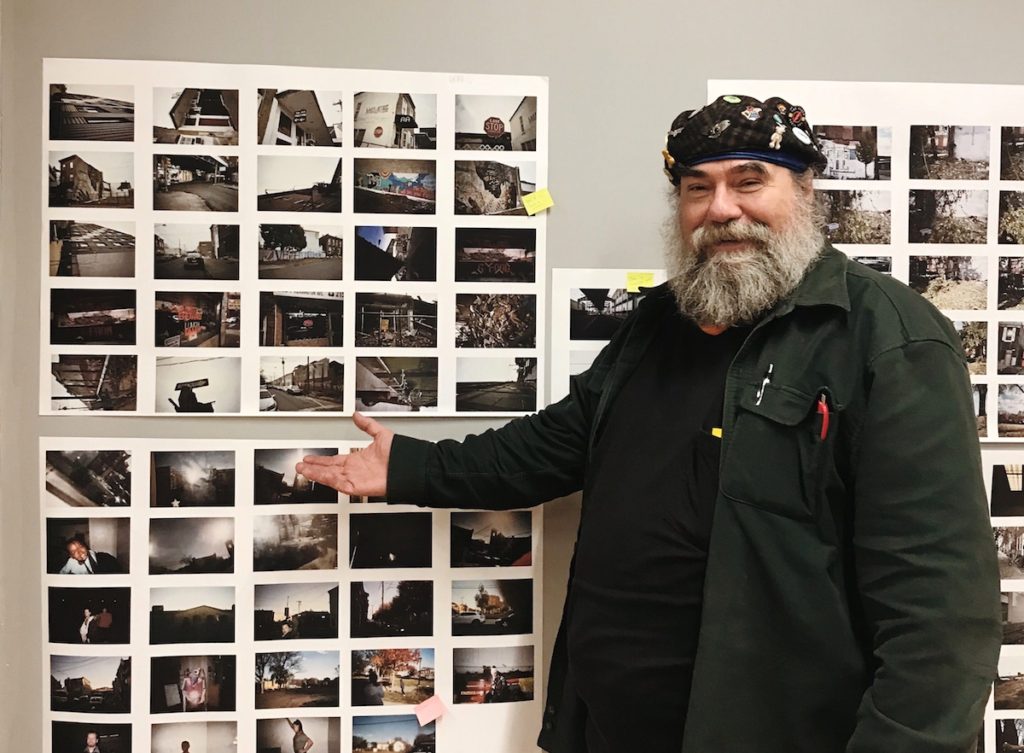Why this Temple journalism class is launching a newsroom in Kensington
 November 28, 2018
Category: Feature, Featured, Long, Purpose
November 28, 2018
Category: Feature, Featured, Long, Purpose
Disclosures
Full disclosure: Generocity is a media partner of Kensington Voice, which means it may eventually republish stories produced by the newsroom.At a time when Americans’ trust in the media is declining, a newsroom called Kensington Voice is preparing to launch with the explicit goal of uplifting the voices of the residents of one Philadelphia neighborhood.
The newsroom is the outcome of a semester-long class led by Temple University journalism professor Jillian Bauer-Reese. In the class, Temple students spent half of their time in the classroom, and half out in Kensington with the goal of convening students, Kensington residents and community partners to create a “community-driven newsroom” that will tell untold stories of the neighborhood, by both student and community media makers.
“Our mission is to use a two-way, bottom-up approach to organize events and produce stories about issues and potential solutions to problems facing Philadelphia’s Kensington neighborhood,” Bauer-Reese said.
Throughout the semester, students have worked to develop a reporter’s guide, code of ethics, website and handful of events that brought members of the community together for a dialogue around what is happening in Kensington and how they feel about what they see in typical media coverage about the area. By the spring, the newsroom will be fully launched with six student editors, and media partners will be invited to republish the stories it produces with attribution to the newsroom.
The driving force behind this course and the project is an attempt to amplify underserved voices, illuminate the complexity of neighborhood challenges and explore solutions to hyperlocal problems.
Kensington is a neighborhood that has been traditionally stigmatized by national news coverage: Major outlets like the New York Times publish stories — such as “Trapped by the ‘Walmart of Heroin’” — that Bauer-Reese feels read more like “addiction porn,” she said, and don’t reflect the energy and ongoing efforts present in the neighborhood. This type of coverage has led to an overall sense of media distrust from the people who live there.
The topics that the media typically chooses to associate with Kensington, such as homelessness and substance use, have personally touched long-time resident and Kensington Voice community partner Evan Figueroa-Vargas’ life and the lives of those he loves. Figueroa-Vargas himself is in long-term recovery from mental health and substance use disorders. Today, he is over seven years sober, a first-time homeowner, a father and an employee of Philly-based nonprofit Mental Health Partnerships, where he works to help members of his community facing the same issues that he has faced.
Figueroa-Vargas lamented that society tends to view individuals who experience chronic illness, substance use disorder and homelessness as moral failures who have chosen that path.
“I want to stick up for those people,” he said. “There are many different reasons that people end up homeless on the streets, why people end up on substances, why they experience poverty and mental health challenges.”
Negative media coverage of Kensington, however, can only deepen hurtful stigmas. Instead, Figueroa-Vargas said, when the media presents a problem, it should collaborate with local residents, experts and advocates to try to come up with a solution, and it should be encouraging the people actually struggling with the issues being reported on to not only tell their own stories, but to become an integral part of the reporting process.
“Just listening is not enough,” he said. “We need to give them a seat at the table.”
Kensington Voice will take a three-pronged approach to this, with each monthly publication featuring three sections: a Voices section, which will feature written or video perspectives from people in the community; a News Features section, which will explore a different question raised by the community each month; and a Solutions section, which will explore actions and solutions to that same issue being explored.
At the core of this project is a commitment to working with stakeholders in the community, including organizations such as social services nonprofit Impact Services, which has been working in the Kensington area since 1974.
“We’re a long-standing part of the Kensington community, which means that we can help facilitate connections for the Kensington Voice,” said Zoë Van Orsdol, the public health projects manager at Impact Services. “Collaboration is an extremely important part of our mission.”
There are a number of ways that community voices are being centered in Kensington Voice. One such way is pop-up newsroom locations, where student journalists table in the community several days each week, inviting community members to talk to them about how they feel about news coverage of Kensington and discuss what issues they would like the news to cover.
Another is through public editorial meetings, which foster transparency about the editorial process and give community members another venue to suggest ideas and discuss past issues.
Students also host biweekly community storytelling workshops. Temple student Maggie Loesch has spearheaded the pilot program for these workshops and met with community members to answer the following prompt, created by Figueroa-Vargas, through photography: “What does Kensington look like to you?”
https://twitter.com/kensingtonvoice/status/1067458154827522049
Loesch is studying in the planning and community development program at Tyler School of Art. Her unique perspective as a non-journalism major has contributed to the interdisciplinary nature of this course and project as a whole.
The prioritization of community engagement, which is not always considered to be a key aspect of journalism, is woven deeply into this project, she said. Another course she’s taking this semester called “Community Engagement and Empowerment” has informed the work she has done for Kensington Voice and aided her in running the storytelling workshops effectively.
As Loesch and other students have expressed, working on Kensington Voice has been a powerful learning experience.
“I can’t even begin to describe how much I’ve learned from this class,” says Solutions Editor Jordan Holycross. “I’ve learned how reporting has real and tangible effects on neighborhoods and people. Journalism has the ability to divide and dehumanize or to uplift and empower. As journalists, we have a responsibility to do right by the people we cover.”
Trending News












